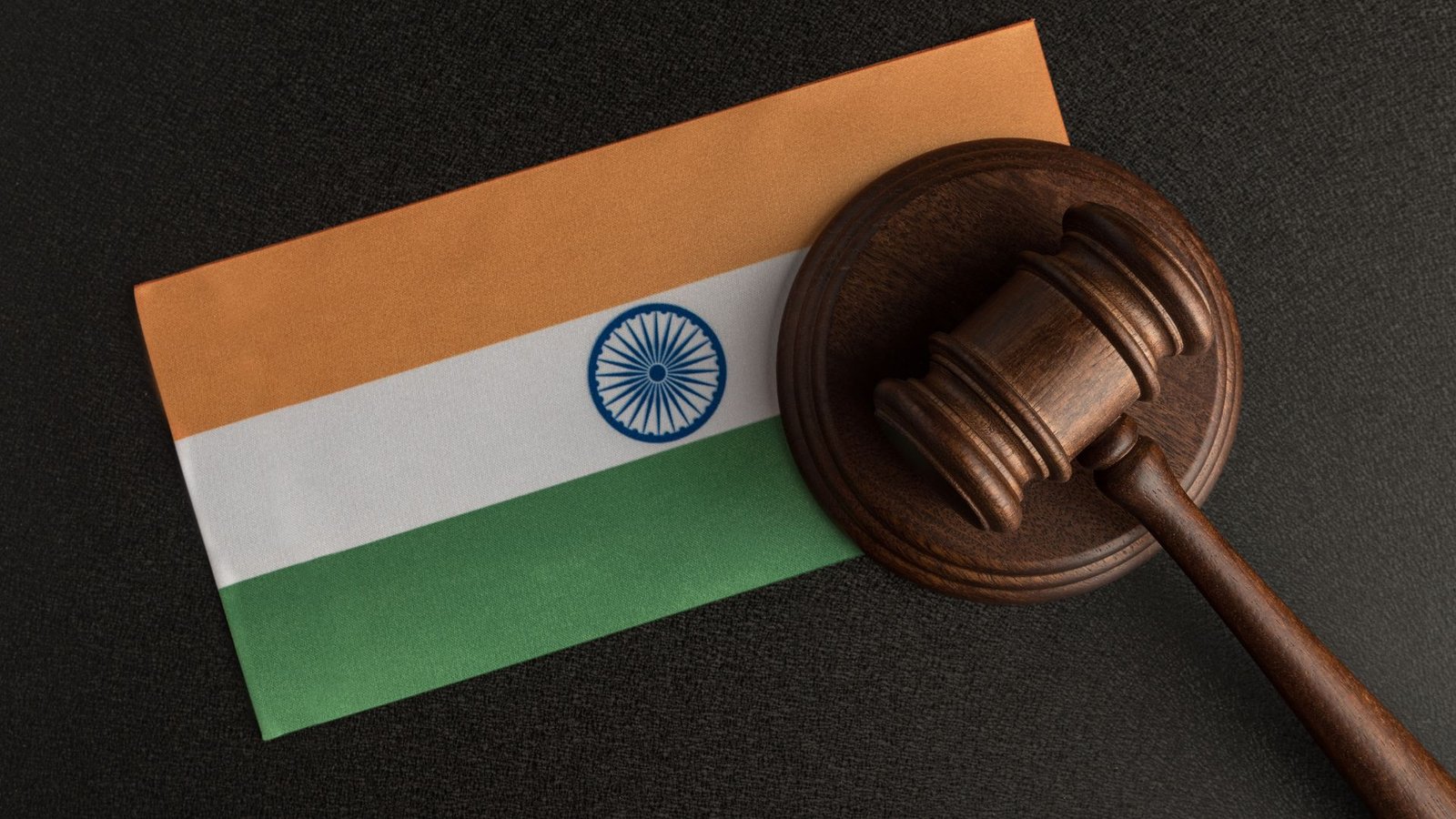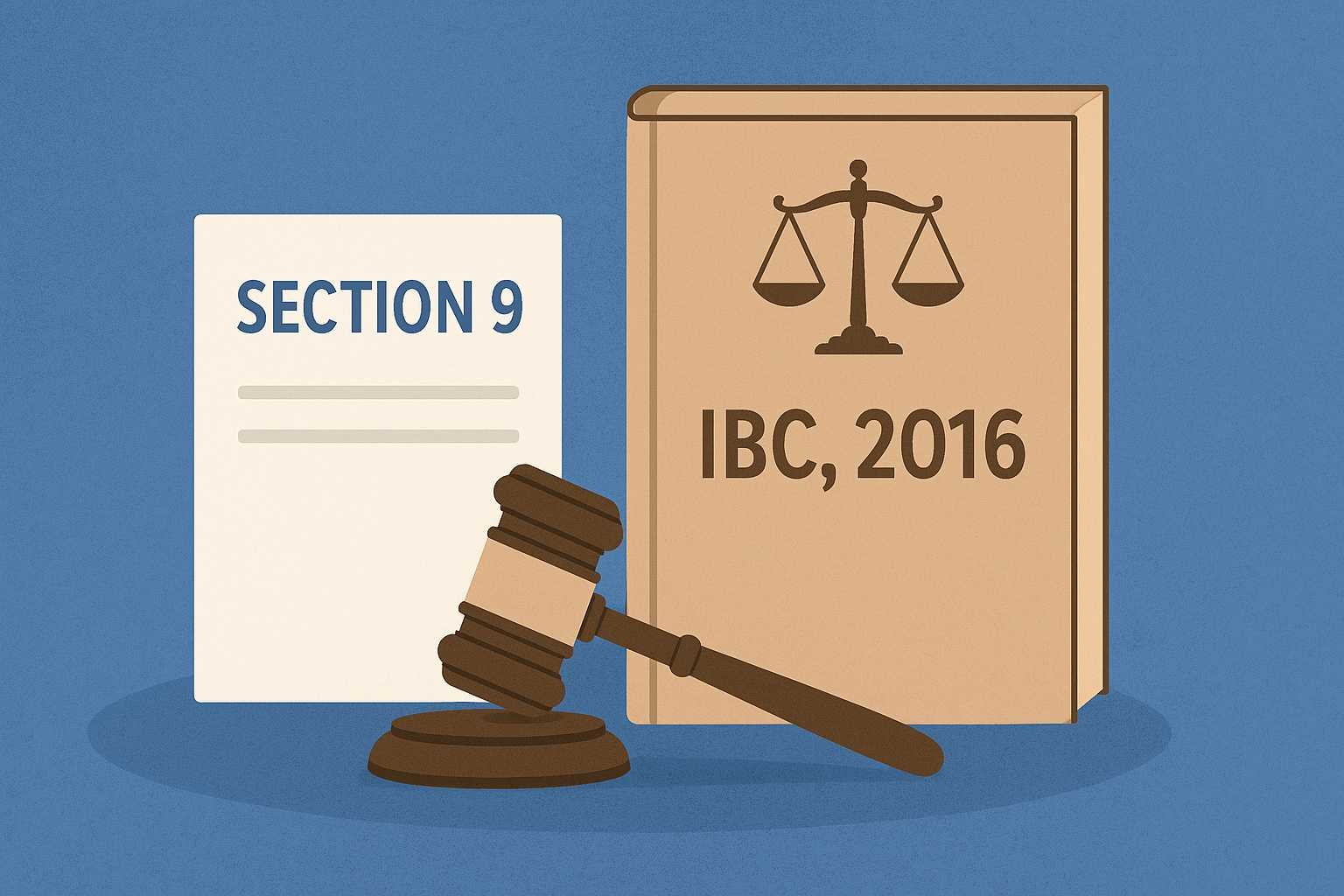On this page you will read detailed information about Structure and Function of State Judiciary in India.
As a researcher or student of India’s legal system, understanding the role and function of state judiciaries merits close study. Gaining insight into how state courts operate independently yet connect to the national Supreme Court reveals key aspects of this federal democracy. With over 20 high courts and a range of lower courts administering justice in India’s states and union territories, appreciating structural and procedural differences as well as similarities across states will aid your analysis. Examining issues from judicial appointments to administration and supervision to caseloads and backlogs will illuminate the strengths and weaknesses of this tiered apparatus. From historical evolution to current challenges, a thorough examination of state judiciaries ultimately highlights the difficulty of providing fair and efficient justice to a diverse populace of over 1 billion.
Overview of the State Judiciary System in India
The Indian state judiciary system consists of an integrated independent judiciary in each state, headed by the High Court. The High Court is the highest court of appeal in the state judiciary system. It has supervisory jurisdiction over all subordinate courts within the state.
The state judiciary system has a hierarchical structure with clearly defined powers at each level. At the lowest level are the District Courts, followed by the District & Sessions Courts. Above them are the High Courts, and then the Supreme Court of India at the apex.
District Courts
The District Courts are the initial courts of litigation in the state judiciary system. They have jurisdiction over civil and criminal cases. District Courts are presided over by District Judges who are selected through a competitive exam conducted by the state public service commission.
District & Sessions Courts
The District & Sessions Courts have original jurisdiction over serious criminal cases (known as ‘sessions’ cases) in addition to the jurisdiction exercised by the District Courts. They are presided over by Sessions Judges with higher qualifications and experience than District Judges.
In the previous post, we had shared information about The Indian Christian Marriage Act of 1872: History and Key Provisions, so read that post also.
High Courts
The High Courts are the highest courts of appeal in the state judiciary system, with supervisory jurisdiction over the subordinate courts. High Courts have the power to issue certain writs under Article 226 of the Constitution. They consist of a Chief Justice and several other judges appointed by the President of India.
To summarize, the state judiciary system in India has a well-defined hierarchical structure to deal with civil and criminal cases. It provides an independent and fair justice system for citizens at the state level under the overall framework of the Indian Constitution.
Composition of State Courts in India
The Indian judiciary is composed of the Supreme Court, High Courts, and district courts in each state. The High Courts are the highest judicial bodies in the states, below the Supreme Court. They have supervisory jurisdiction over all courts within the state.
High Courts in India derive their powers from Article 226 of the Constitution. They have the power to issue directions, orders, and writs for the enforcement of fundamental rights or for any other purpose. High Courts have the power to punish for contempt of themselves or of any court subordinate to them.
Each state has a High Court, which is the highest court of appeal in that state. Some states have common High Courts. There are currently 25 High Courts in India. The High Courts have both appellate and original jurisdiction in civil and criminal matters. They hear appeals from lower courts and tribunals. They can hear writ petitions in matters related to the infringement of fundamental rights of citizens.
Below the High Courts are the district courts or subordinate courts in each district of a state. These courts have original jurisdiction in civil and criminal cases. They comprise courts of district judges, additional district judges, chief judicial magistrates, and civil judges. The district courts hear civil and criminal cases, decide the cases, and pass judgements. Appeals from judgments of district courts lie to the High Court.
The lower judiciary comprises courts at the taluka level. These include courts of civil judges, senior division, and courts of judicial magistrates. They have jurisdiction over civil and criminal matters arising in their respective territorial jurisdictions. Appeals from the courts of civil judges and judicial magistrates lie to the district court.
Therefore, the state judiciary in India has a hierarchical structure with clear separation of powers and jurisdictions among the High Courts, district courts, and lower courts. This well-defined system aims to provide access to justice for all citizens across the states.
Hierarchy of State Courts in India
The structure of the state judiciary in India follows a hierarchy based on jurisdiction and authority. At the lowest level are the district courts, followed by the high courts, and finally the Supreme Court at the apex.
District courts, also known as subordinate courts, handle the bulk of civil and criminal cases in each district. They include the courts of session judge, district judge, subordinate judge, and munsifs. These courts have original jurisdiction over all cases arising in the district.
High courts are placed higher in the judicial hierarchy. There are currently 25 high courts in India, three having jurisdiction over more than one state. High courts have superintendence and judicial control over all courts and tribunals within their jurisdiction. They hear appeals against decisions of district courts and tribunals. They also have original jurisdiction in certain cases like writ petitions.
The Supreme Court is the highest court of appeal in India. It has ultimate appellate jurisdiction over all courts and tribunals in India. It hears appeals against judgements of the high courts and can transfer cases from one high court to another or from a high court to itself. It can also issue writs for enforcement of fundamental rights. The Supreme Court’s decisions are binding on all lower courts in India.
In summary, the state judiciary follows a three-tier system, with the district courts at the base, high courts in the middle, and the Supreme Court at the apex. This hierarchy ensures that people have access to justice at multiple levels. The lower courts handle bulk of the caseload, while appeals can be made to progressively higher courts.
Powers and Jurisdiction of State Courts
State courts serve as the judicial arm of state governments in India. They have jurisdiction over disputes arising within the territory of the state.
State courts derive their powers from the Constitution of India. They have the authority to interpret laws passed by the state legislature and apply them in relevant cases. They can also examine whether a law passed by the state legislature is constitutional or not.
The highest court in a state is the High Court. Below the High Court, there is a hierarchy of subordinate courts such as District Courts, Sessions Courts, and Magistrate Courts.
- District Courts act as courts of original civil jurisdiction, hearing civil cases involving sums over a specified amount. They also serve as appellate courts for decisions made by lower courts.
- Sessions Courts act as courts of original criminal jurisdiction, hearing serious criminal offenses. They also hear appeals from judgments passed by Magistrate Courts.
- Magistrate Courts or Judicial Magistrate First Class Courts have jurisdiction over less serious criminal offenses and can pass sentences of up to two years of imprisonment. They also have limited civil jurisdiction.
In addition to the courts mentioned above, some states have dedicated Commercial Courts, Motor Accidents Claims Tribunals, and Family Courts to deal with specific types of disputes.
The jurisdiction and powers of state courts are limited to the territory of the state. They cannot hear disputes involving the central government or other state governments. They also cannot rule on the constitutional validity of central laws or interpret the provisions of the Constitution of India. Those powers are vested solely in the Supreme Court and High Courts of India.
Within their jurisdiction, state courts play an important role in dispensing justice and upholding the rule of law. They provide a mechanism for aggrieved citizens to seek redressal and ensure that laws are applied uniformly.
Appointment of Judges in State Judiciary
The appointment of judges to state judiciary is governed by Articles 233 to 237 of the Constitution of India. State judges are recruited through a collegium system.
Collegium system
The collegium system consists of the Chief Justice and two senior-most judges of the High Court. They recommend names to the Governor, who can appoint them as judges of the High Court. However, the collegium’s recommendation is binding on the Governor.
- The collegium considers candidates on the basis of their merit, ability, and seniority.
- They evaluate qualities like judicial temperament, character, and competence.
- Candidates are typically practicing advocates, lower court judges, or judicial officers.
- The collegium’s decision aims to be impartial and apolitical. However, it has faced criticism for lack of transparency.
Eligibility criteria
To become a High Court judge, a candidate must:
- Be a citizen of India.
- Have been an advocate of a High Court for 10 years or an officer in the judicial service for 7 years.
- Be under 62 years of age. The retirement age is 65 years.
- Be of good character and integrity.
Procedure
The procedure for appointment broadly involves:
- Names are proposed by the collegium of the High Court.
- The collegium consults other judges and stakeholders.
- The collegium sends the proposal to the Governor, who forwards it to the Union Minister of Law and Justice.
- The Union Government can ask the collegium to reconsider the proposal but must ultimately appoint the candidate.
- If the proposal is accepted, the President appoints the candidate as an Additional Judge for 2 years.
- Upon satisfactory performance, the judge is appointed as a Permanent Judge.
The appointment of judges to the state judiciary aims to uphold principles of independence of the judiciary and competent administration of justice for citizens. However, the collegium system needs reform to increase accountability and transparency. Overall, state judges have a vital role in dispensing justice and interpreting the law.
Independence of the State Judiciary
The independence of India’s state judiciary is essential to a fair and impartial legal system. According to the Constitution, state judiciaries are independent of executive and legislative interference.### Appointment of Judges
Judges of state High Courts are appointed by the President in consultation with the Chief Justice of India and the Governor of the state. This process aims to appoint judges based on merit rather than political considerations. Judges can only be removed by impeachment, which requires a two-thirds majority in both houses of Parliament. The salaries and benefits of High Court judges are charged to the Consolidated Fund of the state, safeguarding their compensation from political pressure.
Separation of Powers
The Indian Constitution establishes an independent judiciary separate from the executive and legislative branches of government. This separation of powers prevents state governments from exerting control over the legal system. High Courts have the authority to declare laws passed by state legislatures unconstitutional if they violate fundamental rights. They can also review executive actions and order compensation for rights violations.
Jurisdiction over State Matters
While the Supreme Court has jurisdiction over disputes between states or the Centre and states, High Courts are the highest judicial authorities within state boundaries. They have original jurisdiction over civil and criminal cases arising in the state. They also hear appeals from subordinate courts. This structure allows state judiciaries to develop expertise in state-specific laws and sensitivities.
To summarize, the independence of state judiciaries in India is constitutionally enshrined and crucial to impartial justice. Their independent appointment process, separation from political branches, and jurisdiction over state matters allow them to check potential abuses of power and protect citizens’ rights. An independent judiciary is a hallmark of a healthy democratic system of government, and state judiciaries play an integral role in India’s constitutional framework.
Issues and Challenges Facing the State Judiciary
The Indian state judiciary faces several significant challenges that impede its effectiveness and efficiency.
Infrastructure and Resources
The state judiciary often lacks proper infrastructure and resources. Many courts do not have adequate courtrooms, furniture, libraries, and residential accommodations for judges. Shortages of support staff like clerks, stenographers, and bailiffs further burden the system. Insufficient funding for technology upgrades and digitization hampers productivity and access to justice.
Case Backlogs
Excessive case backlogs plague the state judiciary. According to reports, over 3.3 crore cases are pending in district and subordinate courts across India. Some cases remain unresolved for several years due to an imbalance between case filings and case disposals. This undermine the quality and timeliness of justice delivery.
Vacancies and Appointments
Vacancies in the state judiciary remain high, with over 5,000 positions unfilled. The complicated appointment process, lack of qualified candidates, and low compensation relative to the private sector contribute to this issue. Delayed appointments and understaffing put extra pressure on existing judges and staff, leading to slower case processing and increased backlogs.
Corruption and Undue Influence
There are concerns about corruption and undue influence within the state judiciary. Instances of bribery to obtain favorable judgments or influence the assignment of cases to certain judges damage public trust in the system. Political pressure and interference in judicial appointments and transfers also threaten the independence of the judiciary.
Reforming the state judiciary to address these challenges is critical to strengthening access to justice in India. Providing adequate funding and infrastructure, streamlining case management processes, filling vacancies, and insulating the judiciary from external pressure can help build a fair, efficient, and independent judicial system in states across the country.
Recent Developments and Reforms in State Judiciaries
Over the past decade, state judiciaries across India have undertaken various developments and reforms to strengthen the administration of justice. Some of the key reforms are:
Increase in Judicial Officers
To address the large number of pending cases, many states have increased the number of judges and judicial officers. For example, Rajasthan approved the creation of additional district judge positions, while Gujarat increased the number of civil judges. These steps will help in faster disposal of cases.
Establishment of Specialized Courts
Some states have set up dedicated courts to handle specific types of cases more efficiently. These include fast track courts for rape and POCSO cases, commercial courts for commercial disputes, and courts for cases under the Negotiable Instruments Act. Karnataka, for instance, established exclusive POCSO courts in all districts. These specialized courts can focus on particular cases leading to quicker resolution.
Infrastructure Development
State governments have upgraded court infrastructure by constructing new court buildings and providing residential facilities for judges. Modern facilities like video conferencing have also been introduced in some courts for recording witness testimonies. These infrastructure initiatives create an enabling environment for the judiciary to function effectively.
Use of Technology
Many state judiciaries have embraced technology to improve case management and increase transparency. Case status information systems allow litigants to check the status of their cases online. Some states like Gujarat and Karnataka have launched e-filing and e-payment facilities for a seamless filing experience. Introduction of video conferencing and digitization of records has also enhanced the functioning of state judiciaries.
While state judiciaries have undertaken promising reforms, more work remains to tackle issues like high pendency, lack of judges and poor infrastructure. Sustained efforts and investments are needed to strengthen the administration of justice in states and uphold people’s faith in the judiciary. Overall, state judiciaries seem to be progressing in the right direction.
State Judiciary in India FAQs
The state judiciary in India comprises the district courts and high courts in each state or union territory. Here are some frequently asked questions about the state judiciary system:
Q1: What is the role and function of the state judiciary?
Q2: How are the district courts structured?
Q3: How are high court judges appointed?
What types of cases can be filed in the high court? The high court has original jurisdiction over civil and criminal cases as well as appellate jurisdiction over cases from lower courts. It can hear writ petitions for enforcement of fundamental rights, disputes between the center and state governments, and appeals against sentences of death. The high court has supervisory control over all courts and tribunals in the state.
In summary, the state judiciary plays an integral role in the administration of justice in India. The district courts and high courts within each state adjudicate a wide range of legal matters, protecting citizens’ rights and upholding the rule of law. Familiarizing yourself with the structure and function of your state’s judiciary system will help you better understand how justice is delivered in India.
Conclusion
As you have seen, the structure and function of state judiciaries in India is complex yet foundational to the country’s democracy. With over 20 high courts and thousands of lower courts across its states and territories, India relies on this tiered system to uphold justice and settle disputes. While states have authority over organizational and administrative aspects, the basic principles of separation of powers and judicial independence still apply. Understanding how state courts operate alongside national institutions reveals much about the broader Indian justice system. Moving forward, further increasing accessibility and efficiency of state courts will likely remain high priorities to truly deliver on the promise of justice for all.
Disclaimer
The information and services on this website are not intended to and shall not be used as legal advice. You should consult a Legal Professional for any legal or solicited advice. While we have good faith and our own independent research to every information listed on the website and do our best to ensure that the data provided is accurate. However, we do not guarantee the information provided is accurate and make no representation or warranty of any kind, express or implied, regarding the accuracy, adequacy, validity, reliability, availability, or completeness of any information on the Site. UNDER NO CIRCUMSTANCES SHALL WE HAVE ANY LIABILITY TO YOU FOR ANY LOSS OR DAMAGE OF ANY KIND INCURRED AS A RESULT OR RELIANCE ON ANY INFORMATION PROVIDED ON THE SITE. YOUR USE OF THE SITE AND YOUR RELIANCE ON ANY INFORMATION ON THE SITE IS SOLELY AT YOUR OWN RISK. Comments on this website are the sole responsibility of their writers so the accuracy, completeness, veracity, honesty, factuality and politeness of comments are not guaranteed.
So friends, today we talked about Structure and Function of State Judiciary in India, hope you liked our post.
If you liked the information about Structure and Function of State Judiciary in India, then definitely share this article with your friends.
Knowing about laws can make you feel super smart ! If you find value in the content you may consider joining our not for profit Legal Community ! You can ask unlimited questions on WhatsApp and get answers. You can DM or send your name & number to 8208309918 on WhatsApp








